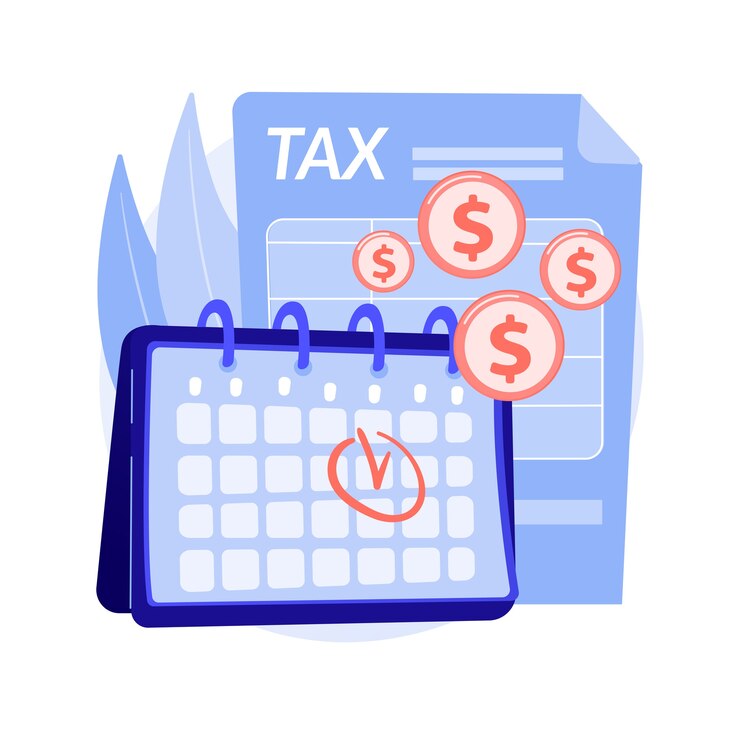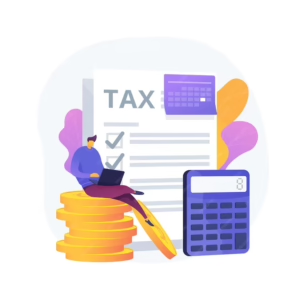How to opt out of GST composition scheme?
- 12 Aug 24
- 11 mins

How to opt out of GST composition scheme?
Key Takeaways
- Growing Beyond the Threshold Necessitates Transition: Businesses exceeding the GST Composition Scheme's turnover limit must switch to the regular GST regime to comply with tax laws.
- Inter-state Expansion Requires Exiting the Scheme: The desire to engage in inter-state trade compels businesses to leave the Composition Scheme due to its intra-state only sales restriction.
- E-commerce Engagement Prompts Withdrawal: To leverage e-commerce platforms, businesses must exit the Composition Scheme, which prohibits e-commerce sales subject to tax collection at source.
- Withdrawal Enables Input Tax Credit Claims: Exiting the scheme allows businesses to claim Input Tax Credit (ITC) on purchases, potentially reducing overall tax liabilities and optimizing costs.
- Transition to Regular GST Filing Involves Adjustments: Businesses transitioning to regular GST filing should prepare for monthly return submissions, adhere to standard GST rates, and maintain detailed invoicing, expanding their market reach and financial strategies.
Motivations for Exiting the Composition Scheme
Businesses may opt to exit the GST Composition Scheme for several strategic reasons, reflecting a change in their operational landscape or a pivot in their growth trajectory. Key motivations include:
- Exceeding the Turnover Threshold: As businesses grow and their annual turnover surpasses the limit set by the GST Composition Scheme, they are required to switch to the regular GST regime to comply with tax laws.
- Expansion into Inter-state Trade: The composition scheme restricts businesses to intra-state sales only. Expansion plans involving inter-state transactions necessitate a move to the regular GST system.
- Engaging in E-commerce: With the digital marketplace becoming an essential sales channel, businesses looking to leverage e-commerce platforms must exit the scheme, as it prohibits e-commerce sales subject to tax collection at source.
- Availing Input Tax Credit (ITC): The inability to claim ITC on purchases is a significant limitation for businesses under the composition scheme. Exiting allows businesses to claim ITC, potentially reducing overall tax liability and optimizing operational costs.
- Diversification of Products or Services: The composition scheme has restrictions on the types of products and services eligible. Businesses diversifying beyond these restrictions find it necessary to opt for the regular GST framework.
Understanding these motivations helps businesses align their tax strategy with their long-term operational and growth objectives, ensuring that their tax regime supports rather than hinders their business model.
Determining the Withdrawal's Effective Date

The transition from the GST Composition Scheme to the regular GST regime is marked by a specific effective date of withdrawal. This date is crucial for businesses to ensure seamless tax compliance and financial planning. Here’s how it's determined:
- Notification Period: The effective date of withdrawal is directly influenced by when the business notifies the tax authorities of its intention to exit the scheme. Generally, the withdrawal takes effect from the beginning of the next financial quarter after the notice is submitted.
- Form Submission: The process involves submitting Form GST CMP-04 on the GST portal. The date on which this form is submitted plays a pivotal role in determining the withdrawal's effective date.
- Regulatory Approval: After submitting the withdrawal notification, businesses should receive confirmation from the tax authorities, which includes the official effective date of their transition to the regular GST regime.
- Tax Period Consideration: It's advisable for businesses to plan their exit in a manner that aligns with their tax period, allowing for a smoother transition in tax filing and accounting practices.
For businesses, marking the withdrawal's effective date is more than a procedural step; it's a strategic move that signifies a shift in their operational capabilities and tax responsibilities. Properly timing this transition can significantly impact a business’s tax planning and compliance efforts, making it an essential consideration for those looking to exit the GST Composition Scheme.
Ineligibility Criteria for the Composition Scheme
The GST Composition Scheme is designed to simplify tax compliance for small and medium-sized businesses. However, not every business qualifies for this scheme due to specific ineligibility criteria set by the GST laws. Understanding these criteria is crucial for businesses to ensure they comply with the GST framework. Key ineligibility factors include:
- Annual Turnover Exceeds Threshold: Businesses whose turnover exceeds the prescribed limit (currently ₹1.5 crores for most states and ₹75 lakhs for special category states) are ineligible for the scheme.
- Inter-state Supply: Businesses involved in the supply of goods or services across state lines cannot opt for the composition scheme, as it is designed primarily for intra-state traders.
- E-commerce Sales: If a business sells goods or services through an e-commerce platform that collects tax at source, it cannot participate in the composition scheme.
- Supplier of Non-Taxable Goods: Businesses dealing in goods or services that are non-taxable under the GST regime are not eligible for the scheme.
- Manufacturer of Certain Goods: There are specific goods listed by the GST council that disqualify a manufacturer from opting for the composition scheme.
- Service Providers: Except for restaurants and other specified service providers, businesses offering services are generally ineligible for the composition scheme.
By keeping these criteria in mind, businesses can assess their eligibility and make informed decisions about whether to enter or exit the GST Composition Scheme.
Procedure on the GST Portal to Exit the Composition Scheme
Exiting the GST Composition Scheme is a straightforward process, but it requires careful attention to detail to ensure compliance with GST regulations. Here’s a step-by-step guide on how to exit the scheme via the GST Portal:

- Login to the GST Portal: Access the GST portal and log in with your credentials.
- Navigate to the Services Menu: Once logged in, go to the 'Services' menu, select 'Registration', and then choose the 'Application to Opt out of Composition Levy' option.
- Fill Out Form GST CMP-04: The application to withdraw from the composition scheme is made using Form GST CMP-04. Fill in the necessary details, including the reason for withdrawal and the effective date of exit.
- Attach Required Documents: Depending on the reason for withdrawal, you may need to attach supporting documents. Ensure all necessary documentation is complete and attached to the application.
- Submit the Form: Review the information for accuracy, then submit the form. You will receive an acknowledgment on your registered email and mobile number.
- File Form GST ITC-01: This is a crucial step for businesses looking to claim input tax credit on their stock. Form GST ITC-01 must be filed within 30 days of the effective date of withdrawal, detailing the inputs and capital goods held in stock.
- Receive Confirmation: The GST department will process your application, and you will receive a formal confirmation of your withdrawal from the scheme. From this point, you will be treated as a regular taxpayer under the GST regime.
Impact of Withdrawal on Input Tax Credit
Withdrawing from the GST Composition Scheme opens the path for businesses to claim Input Tax Credit (ITC), a feature unavailable to them while part of the scheme. This transition allows businesses to deduct the tax paid on inputs from the tax owed on sales, potentially leading to significant tax savings and impacting cash flow positively. Key points regarding the impact on ITC include:
- Eligibility for ITC: Upon exiting the composition scheme, businesses become eligible to claim ITC on the inputs, input services, and capital goods intended for use in business. This can include stock on hand, inputs contained in semi-finished goods, and inputs contained in finished goods held on the effective date of withdrawal.
- Filing Form GST ITC-01: To claim the ITC, businesses must file Form GST ITC-01 within 30 days of transitioning to the regular GST scheme. This form details the stock and inputs for which ITC is claimed.
- Documentary Requirements: Adequate documentation, including invoices and receipts, is crucial for claiming ITC. These documents serve as evidence of tax paid on inputs and must be retained to substantiate the claim.
- Impact on Cash Flow: Initially, the need to pay full GST rates on sales while waiting to claim ITC can impact cash flow. However, once the ITC claims are processed, businesses may see a net positive effect on their financials.
Understanding these aspects can help businesses plan their transition effectively, ensuring they leverage the benefits of ITC post-withdrawal from the composition scheme.
Transitioning to Regular GST Filing: What to Expect

The transition from the GST Composition Scheme to regular GST filing marks a significant shift in how businesses manage their taxes. Here's what businesses can expect during and after this transition:
- Frequent Filing Requirements: Unlike the quarterly filings under the composition scheme, regular GST filers must submit monthly returns (GSTR-1 and GSTR-3B), increasing the frequency of tax-related administrative tasks.
- Higher Tax Rates: Businesses will be subject to the standard GST rates, which can be higher than the fixed rates under the composition scheme. This transition requires adjusting pricing strategies to account for the increased tax burden.
- Detailed Invoicing: Regular GST filers must issue detailed tax invoices for every sale, which include GSTINs, tax rates, and HSN/SAC codes. This requirement enhances transparency but also demands more meticulous record-keeping.
- Eligibility to Make Inter-state Sales: Exiting the composition scheme removes restrictions on inter-state sales, allowing businesses to expand their market reach beyond state borders.
- Access to Online Marketplaces: Businesses can start selling through e-commerce platforms, tapping into a broader customer base and leveraging online sales channels.
- Adjustments in Accounting Software: It's essential to update accounting practices and software to accommodate regular GST filing requirements, including detailed invoicing and tax rate applications.
Transitioning to regular GST filing requires businesses to adapt to a more detailed and frequent tax compliance regimen. However, with the right planning and adjustments, businesses can navigate this transition smoothly, capitalizing on the opportunities it presents for growth and expansion.
💡If you want to pay your GST with Credit Card, then download Pice Business Payment App. Pice is the one stop app for all paying all your business expenses.



















